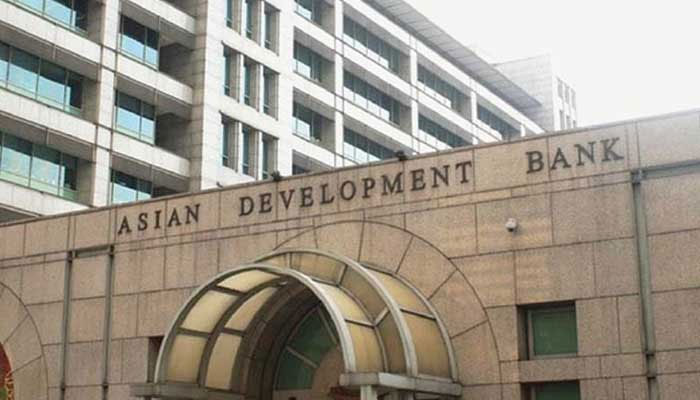Closing gender gap to boost Pakistan’s GDP by 30pc: ADB
KARACHI: Pakistan could raise GDP by as much as 30 percent if it can close the gender gap, ADB Country Director for Pakistan Xiaohong Yang said while expressing support to women’s economic empowerment, quality opportunities for social advancement, and resilience to external shocks.
“ADB will aim to increase women’s access to financial services and raise their skills and education levels – increasing their access to higher-skilled and waged employment such as the ICT sector, and bolster social protection programs, where women are the primary beneficiaries,” Yang said in a question-and-answer roundup.
“ADB will prioritise interventions to cut women’s time poverty and drudgery by improving their access to modern technology, particularly in the agriculture sector, connecting them to affordable and reliable energy, and contributing convenient water supply and sanitation solutions.”
Yang said gender inequities continue to be a significant challenge in Pakistan with low literacy rates and labor force participation for women. COVID-19 has heightened the risk of increased gender disparities in the country, she said.
The ADB recently endorsed a new country partnership strategy (CPS) for 2021–2025, designed to help restore economic stability and growth. This will focus on improving economic management, building resilience through human capital development and social protection, and boosting competitiveness and private sector development to expand economic opportunities.
In 2020, ADB committed $500 million to help finance the government’s countercyclical economic stimulus with a focus on boosting safety nets for the jobless and helping poor and vulnerable groups including women and children. ADB also provided a $300 million emergency support loan and repurposed $30 million to help reduce the socioeconomic and health impacts of the pandemic. ADB worked very closely with other international financial institutions and bilateral agencies during the COVID-19 crisis and mobilised about $1.22 billion in cofinancing from other development partners.
In addition, ADB quickly mobilised about $6 million in grants, together with $9 million in co-financing from other bilateral donors for immediate humanitarian and health emergency expenditures and training for health workers.
Yang said poverty reduction remains a key challenge in Pakistan. Around a quarter of the population lives below the poverty line; 20 million more are near-poor and highly vulnerable to shocks. ADB is currently working with Pakistan to access ADB’s Asia Pacific Vaccine Access Facility – a $9 billion resource envelope with country-specific allocations, accessible in line with our members’ readiness. These APVAX resources are in addition to the regular country allocation.
ADB’s official said a robust private sector is critical to the country’s goal of achieving upper-middle-income status, but the high cost of doing business limits its competitiveness.
Unreliable access to basic infrastructure is also a significant constraint for private sector activities, while access to finance remains limited for women entrepreneurs, small businesses, and other underserved segments.
“ADB will support the government in implementing tariff and tax reforms. The streamlined import tariff and tax procedures will help private businesses thrive and facilitate export diversification,” she said. “Our focus is on engaging public and private sectors to promote renewable energy, energy efficiency and build livable cities. We will continue to invest in rural infrastructure, strengthen agricultural value chains, improve connectivity, and increase access to finance by promoting lending to small- and medium-sized enterprises, women-led and women-driven businesses, and new business areas such as agribusiness, digitization, and tourism.”
Yang said ADB will maintain its support for building climate resilience and adaptation into communities and infrastructure.
Through its membership of Central Asia Regional Economic Cooperation Program and other regional platforms, Pakistan can continue improving connectivity, developing multimodal transport systems, and strengthening cross-border trade.
Pakistan has the potential to become a regional hub for trade and economic activity, but greater cooperation is impeded by weak connectivity and trade links.
-
 Everything You Need To Know About Macron’s Viral Glasses: Cost, Model, All Details Revealed
Everything You Need To Know About Macron’s Viral Glasses: Cost, Model, All Details Revealed -
 Elon Musk Warns Of AI ‘supersonic Tsunami’: What It Means For Future
Elon Musk Warns Of AI ‘supersonic Tsunami’: What It Means For Future -
 Why Victoria Beckham's Dance Video From Brooklyn's Wedding Won't Be Released
Why Victoria Beckham's Dance Video From Brooklyn's Wedding Won't Be Released -
 Prince Harry No Longer Focused On Healing Royal Family Feud?
Prince Harry No Longer Focused On Healing Royal Family Feud? -
 OpenAI Aims To Make AI A Daily Global Tool
OpenAI Aims To Make AI A Daily Global Tool -
 Will Andrew Receive Any Royal Treatment After Title, Royal Lodge Removal?
Will Andrew Receive Any Royal Treatment After Title, Royal Lodge Removal? -
 How Your Body 'suffers' In Back Pain And Simple Way To Fix It
How Your Body 'suffers' In Back Pain And Simple Way To Fix It -
 What Victoria Beckham Really Did At Brooklyn, Nicola’s Wedding Revealed
What Victoria Beckham Really Did At Brooklyn, Nicola’s Wedding Revealed -
 Send Your Name To Moon With Nasa’s Artemis Mission: Here’s How
Send Your Name To Moon With Nasa’s Artemis Mission: Here’s How -
 Zhipu AI, MiniMax Debuts Mask Structural Hurdles For China’s Tech Giants
Zhipu AI, MiniMax Debuts Mask Structural Hurdles For China’s Tech Giants -
 ‘Stargate Community’: Inside OpenAI’s Plan To Cut AI Data Center Energy Costs
‘Stargate Community’: Inside OpenAI’s Plan To Cut AI Data Center Energy Costs -
 Could Brooklyn Beckham Drop His Surname Following Family Feud?
Could Brooklyn Beckham Drop His Surname Following Family Feud? -
 Rachel McAdams Becomes Object Of Jokes At Hollywood Star Of Fame Event
Rachel McAdams Becomes Object Of Jokes At Hollywood Star Of Fame Event -
 South Korea's Ex-PM Han Duck-soo Jailed For 23 Years Over Martial Law Crises
South Korea's Ex-PM Han Duck-soo Jailed For 23 Years Over Martial Law Crises -
 Global Markets On Edge Over Greenland Dispute: Is US Economic Leadership At Risk?
Global Markets On Edge Over Greenland Dispute: Is US Economic Leadership At Risk? -
 King, Queen Visit Deadly Train Crash Site
King, Queen Visit Deadly Train Crash Site




